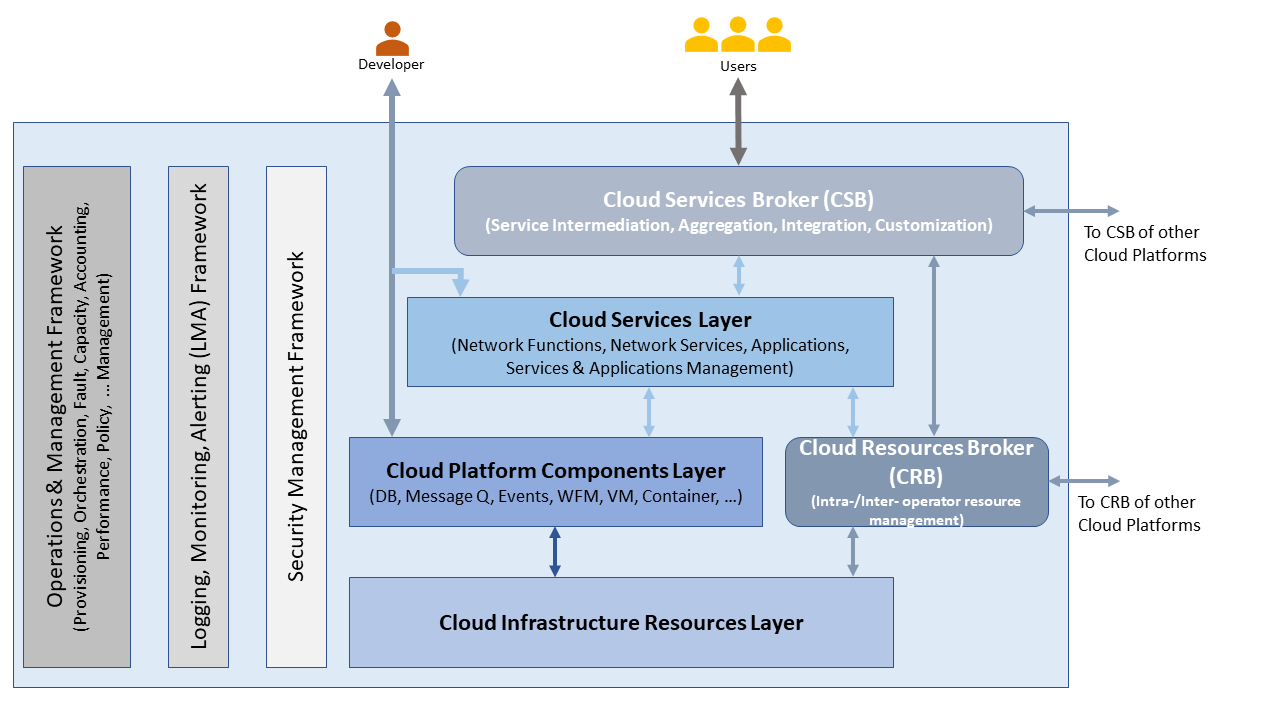...
- Each Telco Cloud consists of multiple interconnected Regions
- A Telco Cloud Region may connect to multiple regions of another Telco Cloud (large capacity networks)
- A Telco Cloud also consists of interconnected local sites (multiple possible scenarios)
- A Telco Cloud's local site may connect to multiple Regions within that Telco Cloud or another Telco Cloud
- A Telco Cloud also consists of a large number of interconnected edge nodes
- Edge nodes may be impermanent
- A Telco Cloud's Edge node may connect to multiple local sites within that Telco Cloud or another Telco Cloud; an Edge node may rarely connect to an Telco Cloud Region
...
Telco Operator Platform Architecture
The Figure below shows a conceptual Telco Operator Platform Architecture. The Cloud Infrastructure Resources Layer exposes virtualised (including containerised) resources on the physical infrastructure resources and also consists of various virtualisation and management software (see details later in this chapter). The Cloud Platform Components Layer makes available both elementary and composite objects for use by application and service developers, and for use by Services during runtime. The Cloud Services Layer exposes the Services and Applications that are available to the Users; some of the Services and Applications may be sourced from or execute on other cloud platforms. Please note that while the architecture is shown as a set of layers, this is not an isolation mechanism and, thus, for example, Users may access the Cloud Infrastructure Resources directly without interacting with a Broker.
The Cloud Services and the Cloud Resources Brokers provide value-added services in addition to the fundamental capabilities like service and resource discovery. These Brokers are critical for a multi-cloud environment to function.
Glossary
...
